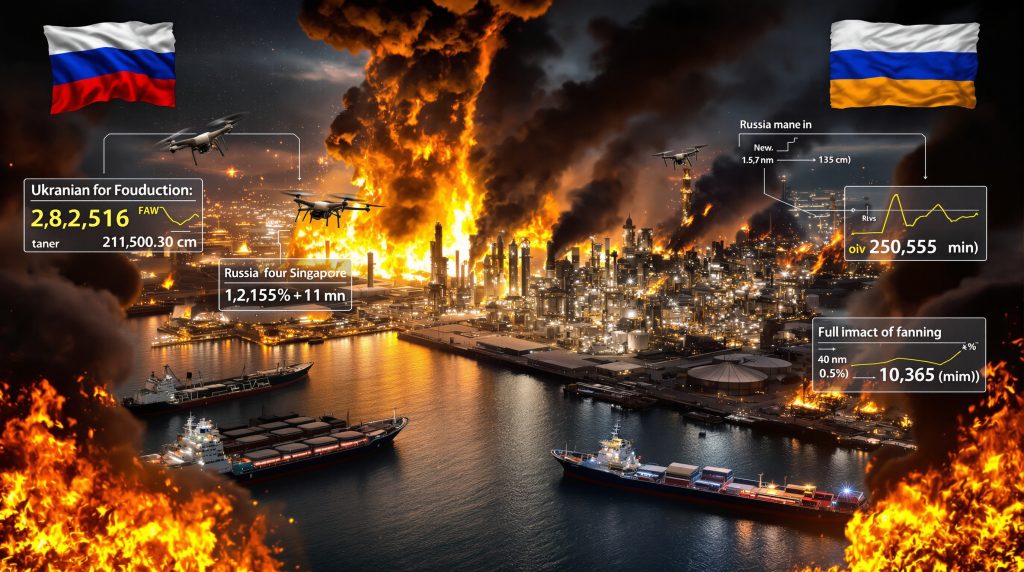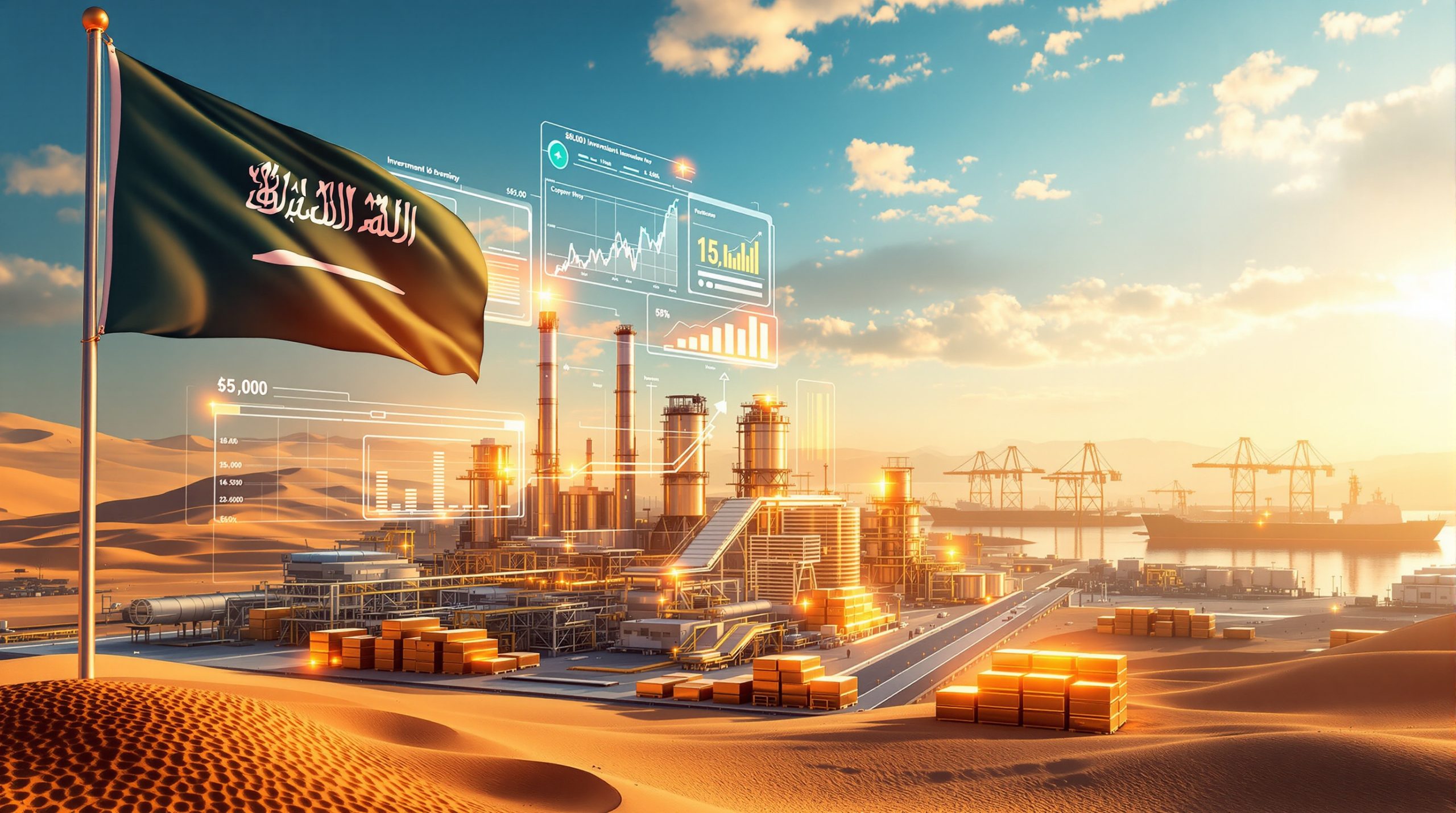Why Is Russia Importing Gasoline From Asia? The Unprecedented Shift in Energy Flows
The strategic balance of Russia's energy sector has undergone a dramatic transformation in recent months, forcing one of the world's largest oil producers to make an unexpected pivot. Ukrainian drone strikes on Russian refining infrastructure have created significant domestic fuel shortages, compelling Moscow to seek gasoline imports from Asian markets. This unprecedented shift marks a critical moment for Russia's energy security and has far-reaching implications for global petroleum markets.
How Have Ukrainian Drone Attacks Created a Fuel Crisis in Russia?
Ukrainian drone strikes have systematically targeted Russia's refining infrastructure with remarkable precision since early 2024, creating an energy security crisis inside the country. These strategic attacks have damaged critical processing units at multiple facilities, with some refineries forced to completely halt operations.
The impact has been substantial, with industry estimates suggesting that at peak disruption, approximately 40% of Russia's total refining capacity was offline. According to reports from Russia, at least 10 major refineries have sustained varying degrees of damage, with several facilities reporting significant production unit losses.
These attacks represent a strategic shift in the conflict, with Ukraine targeting Russia's energy infrastructure to undermine both economic stability and military logistics. By focusing on secondary processing units critical for producing finished fuels, Ukrainian forces have created bottlenecks that cannot be easily resolved through crude oil redirection alone.
While Russian authorities have been reluctant to acknowledge the full extent of damage, Deputy Prime Minister Alexander Novak has publicly admitted to "slight shortages of petroleum products" in certain regions. This understated assessment contrasts sharply with on-the-ground reports of fuel rationing and supply disruptions across multiple areas.
Which Asian Countries Are Becoming Russia's New Fuel Suppliers?
As domestic production falters, Russia has turned to Asian partners to fill the growing supply gap. This remarkable shift has transformed Russia from a major fuel exporter into a net importer virtually overnight.
China's Emerging Role in Russian Fuel Security
China represents perhaps Russia's most strategically important potential fuel supplier. The geographic proximity between the two nations creates natural logistical advantages that minimize transportation costs and delivery times. Existing rail connections and cross-border infrastructure facilitate the efficient movement of petroleum products.
Chinese refineries have significant spare capacity that can be redirected to meet Russian demand. The country's extensive refining sector underwent massive expansion over the past decade, creating excess production potential that can now serve neighboring markets.
This fuel trade builds upon an already deepening energy relationship between Moscow and Beijing. Since Western sanctions began targeting Russian energy exports in 2022, China has emerged as the primary buyer of Russian crude oil, creating natural reciprocity in this new arrangement.
Singapore as a Strategic Petroleum Products Hub
Despite its geographic distance from Russia, Singapore offers unique advantages as a fuel supplier. The city-state serves as Asia's preeminent petroleum trading and refining hub, with extensive storage facilities and blending capabilities.
Singapore's refineries specialize in producing high-quality fuels that meet stringent international standards, which may be particularly valuable as Russia faces quality challenges with its remaining domestic production. The country's position as a neutral trading center also provides political advantages, reducing the risk of additional sanctions interference.
Maritime logistics between Singapore and Russia's eastern ports are well-established, with regular shipping routes that can be leveraged for fuel imports. However, the extended transportation distance creates higher costs compared to nearby suppliers like China.
South Korea's Potential as a High-Quality Gasoline Source
South Korea offers another viable option for Russian fuel imports, particularly for higher-grade petroleum products. Korean refineries are known for their advanced technology and ability to produce premium-specification fuels with low sulfur content and excellent performance characteristics.
However, South Korea's close alignment with Western nations creates potential political complications for expanded energy trade with Russia. These political considerations may limit the volume of fuel that Korean refineries can supply without risking secondary sanctions or diplomatic pressure.
What Policy Changes Has Russia Implemented to Facilitate Asian Imports?
Russia's government has enacted several significant policy changes to address the fuel supply crisis, including measures specifically designed to facilitate imports from Asian markets.
The Significance of the 5% Import Duty Waiver
In a telling indication of the crisis's severity, the Russian government has eliminated the standard 5% import duty on fuel imports from China, Singapore, and South Korea. According to Kommersant reporting, this waiver specifically targets gasoline imports from these Asian nations.
This duty elimination represents a significant departure from Russia's traditional protectionist stance toward its domestic refining industry. By removing this economic barrier, Moscow aims to make imports economically viable despite increased transportation costs and to encourage rapid supply responses from Asian partners.
For perspective, the 5% duty had previously served as a deliberate barrier to protect domestic producers against foreign competition. Its removal signals both the severity of the current shortages and the government's prioritization of fuel security over industry protection.
Belarus Connection: Increasing Imports From Traditional Allies
Beyond Asian suppliers, Russia is also boosting fuel imports from its traditional ally Belarus. The two nations have deeply integrated energy infrastructure, including direct pipeline connections that facilitate efficient product transfers.
Belarus operates two major refineries with a combined capacity of approximately 460,000 barrels per day. While modest compared to Russia's pre-crisis refining capacity, these facilities provide a reliable nearby source of compatible petroleum products that require minimal logistical coordination.
The Belarus-Russia energy relationship has historically operated in the opposite direction, with Russia supplying crude oil to Belarusian refineries. This reversal of traditional flows underscores the extraordinary nature of Russia's current predicament.
How Severe Are Russia's Domestic Fuel Shortages?
The impact of refinery outages has not been evenly distributed across Russia, creating varying degrees of fuel availability challenges depending on location and regional supply dynamics.
Regional Disparities in Fuel Availability
Southern regions closer to Ukraine have experienced the most acute shortages, likely due to both their proximity to the conflict zone and damage to nearby refining facilities. Reports indicate that Crimea has implemented fuel rationing measures, limiting purchases to specific quantities per transaction.
Urban centers appear to receive priority in supply allocation, with Moscow and other major cities maintaining relatively stable fuel availability despite nationwide production decreases. This prioritization likely reflects both political considerations and the greater economic impact of shortages in densely populated areas.
Rural communities have reported more significant price increases despite official controls, with some areas seeing gray market fuel trading at substantial premiums to regulated prices. The agricultural sector has expressed particular concern about diesel availability for spring planting and harvest operations.
Government Interventions to Manage the Crisis
Russian authorities have implemented several emergency measures to manage fuel distribution and prevent market panic:
- Deployment of strategic petroleum reserves to address acute regional shortages
- Price control mechanisms to prevent speculation and profiteering
- Public messaging that characterizes shortages as temporary and manageable
- Prioritization frameworks that ensure essential services maintain adequate supply
Deputy Prime Minister Alexander Novak has publicly downplayed the severity of the situation, acknowledging only "slight shortages" that are being addressed through strategic reserves. This messaging appears designed to maintain public confidence while authorities implement longer-term solutions.
What Technical Compromises Is Russia Considering?
The scale of Russia's refining crisis has forced consideration of technical compromises that would have been unthinkable under normal circumstances, including potential regulatory rollbacks and quality standard adjustments.
The Controversial Return of Monomethylaniline (MMA)
In perhaps the clearest indication of the crisis's severity, Russian authorities are considering lifting their 2016 ban on monomethylaniline (MMA), a controversial octane-boosting additive. This chemical compound artificially enhances gasoline octane ratings without requiring proper refining processes.
MMA was prohibited in Russia in 2016 due to serious concerns about its:
- High toxicity and health risks for humans
- Established carcinogenic properties
- Environmental contamination potential
- Incompatibility with modern engine technologies and catalytic converters
The potential reintroduction of this banned substance reveals the desperate measures being contemplated to increase gasoline output through chemical enhancement rather than proper refining. Such a move would represent a significant regression in fuel quality standards that could have lasting implications for vehicle performance and environmental outcomes.
Refinery Reconfiguration and Emergency Measures
Beyond chemical solutions, Russian engineers are implementing various technical adjustments to maximize gasoline production from remaining operational capacity:
- Reconfiguring refinery operations to prioritize gasoline over other products
- Accelerating maintenance schedules at undamaged facilities to maximize utilization
- Exploring temporary processing units to supplement damaged infrastructure
- Adjusting product specifications to increase yields at the expense of performance
These technical adaptations aim to squeeze maximum output from remaining refining capacity, though often at the cost of efficiency, environmental performance, or product quality.
How Does This Shift Impact Global Energy Markets?
Russia's transition from major exporter to net importer has created ripple effects throughout global fuel markets, altering traditional trade flows and influencing regional price dynamics.
From Major Exporter to Net Importer: Market Implications
Before the conflict, Russia was one of the world's largest exporters of refined petroleum products, with substantial volumes flowing to global markets. The country's export ban on gasoline and new restrictions on diesel exports by non-producers have removed significant volumes from international trade.
Asian refiners have benefited from this shift, operating at higher utilization rates to meet Russian demand. This increased regional demand has strengthened refining margins for processors in China, Singapore, and South Korea, potentially supporting further investment in capacity.
European buyers have successfully diversified their supply sources since reducing Russian imports, turning to Middle Eastern, U.S., and Indian suppliers to replace traditional Russian volumes. While this transition initially created price volatility, markets have largely stabilized as new trade war global impact patterns emerge.
The most significant price impacts have remained largely confined within Russia itself, where government interventions have attempted to mask the full market effects of the supply disruption. Price controls have prevented runaway inflation at the pump, but at the cost of creating periodic physical shortages.
Economic Costs of Import Dependency
Russia now faces substantial economic costs associated with its new import dependency:
- Foreign currency expenditures for essential fuel purchases
- Higher per-unit costs due to transportation expenses
- Loss of previous export revenue streams
- Budgetary implications as domestic price controls limit cost recovery
This transition represents both a financial burden and a strategic vulnerability for a country that has long leveraged its energy exports as a source of geopolitical influence.
What Are the Long-Term Strategic Implications?
While the immediate focus remains on addressing acute shortages, Russia's refining crisis may have lasting consequences for its energy sector and broader economic strategy.
Infrastructure Recovery Timelines and Challenges
Industry experts suggest that even with intensive repair efforts, Russia's refining sector may not return to pre-conflict capacity levels for several years. The most severely damaged facilities could require 2-3 years for full restoration, particularly as Western sanctions limit access to specialized equipment and technology.
Repair priorities appear focused on facilities with the least structural damage that can be returned to service quickly, while more extensively damaged plants may face prolonged outages or permanent capacity reductions. This triage approach could reshape Russia's regional refining footprint over the long term.
The cumulative cost of repairing or replacing damaged infrastructure will likely reach into the billions of dollars, creating an additional financial burden on top of the operational costs of import dependency.
Permanent Changes to Russia's Energy Security Strategy
This crisis may force permanent recalibrations in Russia's approach to energy security:
- Greater emphasis on refinery hardening and physical protection measures
- Increased geographic dispersion of critical infrastructure
- Development of more robust domestic supply chains for repair and maintenance
- Potential long-term diversification of supply sources as a security measure
While Russia will certainly prioritize restoring refining self-sufficiency when circumstances permit, some of the new trade relationships established during this crisis may persist as a strategic hedge against future vulnerabilities.
Frequently Asked Questions About Russia's Fuel Crisis
How long will Russia need to import gasoline?
The timeline depends primarily on repair progress at damaged refineries. Industry analysts suggest imports may be necessary for at least 6-12 months, with some severely damaged facilities potentially requiring 2-3 years for full restoration. This creates a medium-term dependency on imports, particularly for higher-grade gasoline products.
Could Russia's domestic fuel prices rise despite government controls?
While official price controls have thus far prevented significant retail price increases, pressure is building within the system. If shortages persist or worsen, authorities may be forced to allow gradual price increases to stimulate imports and domestic production. Any substantial price rises would be carefully managed to minimize public discontent.
How is the military fuel supply being prioritized during the shortage?
Military fuel requirements are receiving absolute priority in distribution decisions. Strategic reserves have been deployed specifically to ensure uninterrupted supply to armed forces, and civilian allocations are being adjusted as necessary to maintain military operations. This prioritization may contribute to regional civilian shortages but reflects the government's security imperatives.
Will Russia's gasoline quality standards change due to the crisis?
Temporary relaxations of certain quality specifications appear likely as refineries adjust operations to maximize output. The potential reintroduction of banned additives like MMA would represent a significant regression in quality standards. Any such changes would likely be presented as temporary emergency measures, though they could persist if production challenges continue.
What impact will this have on global gasoline prices?
The global impact has been relatively contained thus far, as Russia's domestic crisis has primarily affected its own market rather than global supply balances. Regional effects have been more pronounced, with Asian refiners benefiting from increased demand. Unless the conflict escalates to affect crude oil production or creates broader regional instability, the oil price movements should remain limited.
Conclusion: The Reshaping of Russia's Energy Landscape
Russia's pivot to Asian gasoline imports represents a profound reversal for what has traditionally been one of the world's largest fuel exporters. This transition carries both immediate economic costs and longer-term strategic implications that will reshape Russia's energy sector for years to come.
The Ukrainian drone campaign has exposed critical vulnerabilities in Russia's energy infrastructure, forcing Moscow to implement emergency measures ranging from import duty waivers to potential regulatory rollbacks. These responses reflect a crisis-driven pragmatism that prioritizes supply security over traditional market protections or quality standards.
As this situation continues to evolve, both the domestic Russian market and broader global energy trade flows will adjust to these new realities. The speed and effectiveness of Russia's refinery repair efforts, combined with the sustainability of its import relationships, will determine whether this represents a temporary disruption or a more fundamental reshaping of regional energy dynamics.
For global energy markets, this situation demonstrates the increasing vulnerability of concentrated infrastructure to precision attacks, potentially influencing future investment decisions and security protocols across the industry. It also illustrates how quickly established energy trade patterns can be disrupted by geopolitical conflict, requiring flexible response mechanisms from both producers and consumers.
Recent oil price retreat trends have been influenced by concerns about global economic growth, while potential OPEC oil production impact continues to balance against these downward pressures. Additionally, new tariffs impact markets in unexpected ways, creating additional uncertainty for energy traders navigating this complex landscape.
| Supplier Country | Logistical Advantages | Quality Considerations | Supply Volume Potential | Political Constraints |
|---|---|---|---|---|
| China | Land borders, rail connections | Variable quality standards | High | Minimal |
| Singapore | Established shipping routes | High-quality products | Medium | Some Western pressure |
| South Korea | Efficient maritime logistics | Premium specifications | Medium | Significant Western alignment |
| Belarus | Direct pipeline connections | Compatible specifications | Limited by capacity | Minimal |
| Product Type | Pre-Attack Production | Current Estimated Production | Deficit | Import Requirements |
|---|---|---|---|---|
| Gasoline | 1.2 million bpd | 0.7-0.9 million bpd | 0.3-0.5 million bpd | 200,000-300,000 bpd |
| Diesel | 1.5 million bpd | 0.9-1.1 million bpd | 0.4-0.6 million bpd | 100,000-200,000 bpd |
| Jet Fuel | 0.3 million bpd | 0.15-0.2 million bpd | 0.1-0.15 million bpd | 50,000-80,000 bpd |
| Other Products | 0.8 million bpd | 0.5-0.6 million bpd | 0.2-0.3 million bpd | Minimal (non-critical) |
Further Exploration:
Readers interested in learning more about global energy market dynamics can also explore related educational content at OilPrice.com, which offers regular updates on international petroleum markets, geopolitical developments, and energy infrastructure.
Ready to Capitalise on the Next Major Resource Discovery?
Stay ahead of market-moving announcements with Discovery Alert's proprietary Discovery IQ model, delivering real-time insights on significant ASX mineral discoveries directly to your inbox. Explore our dedicated discoveries page to understand how these announcements can generate substantial returns for early investors.




